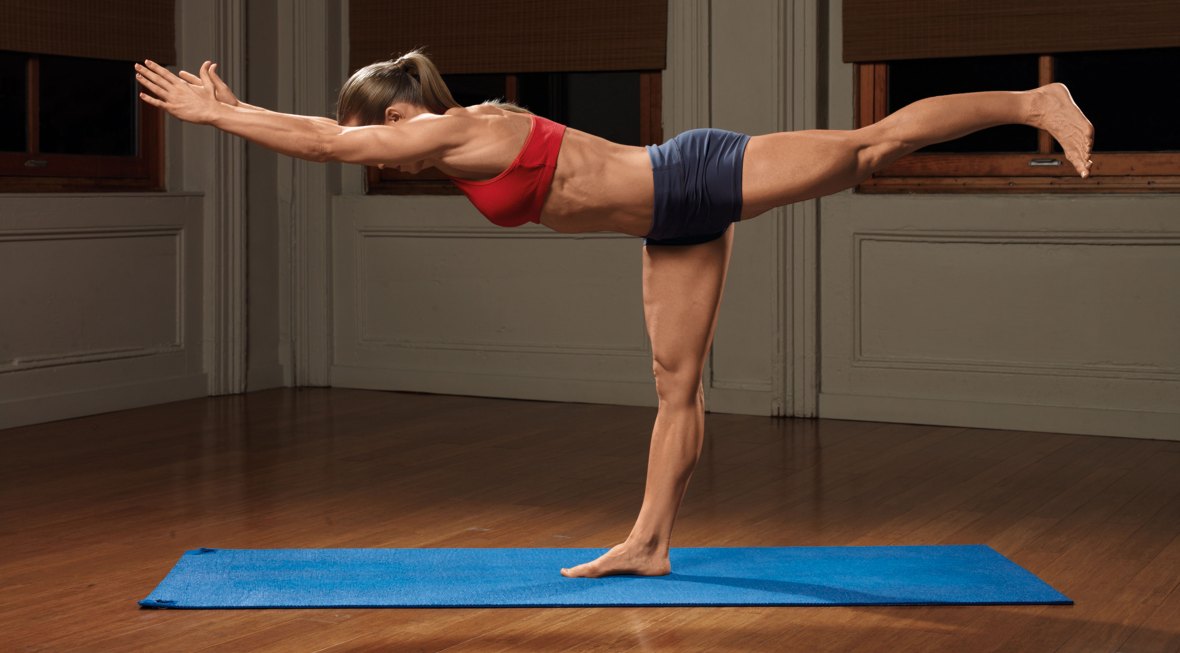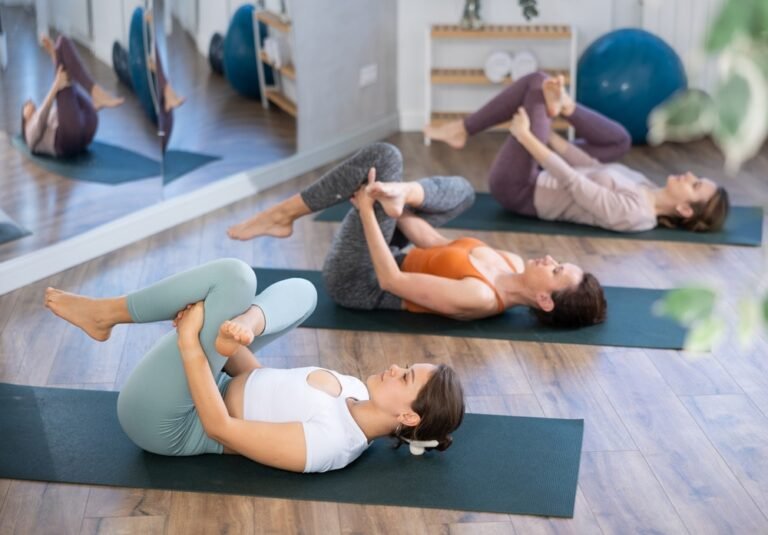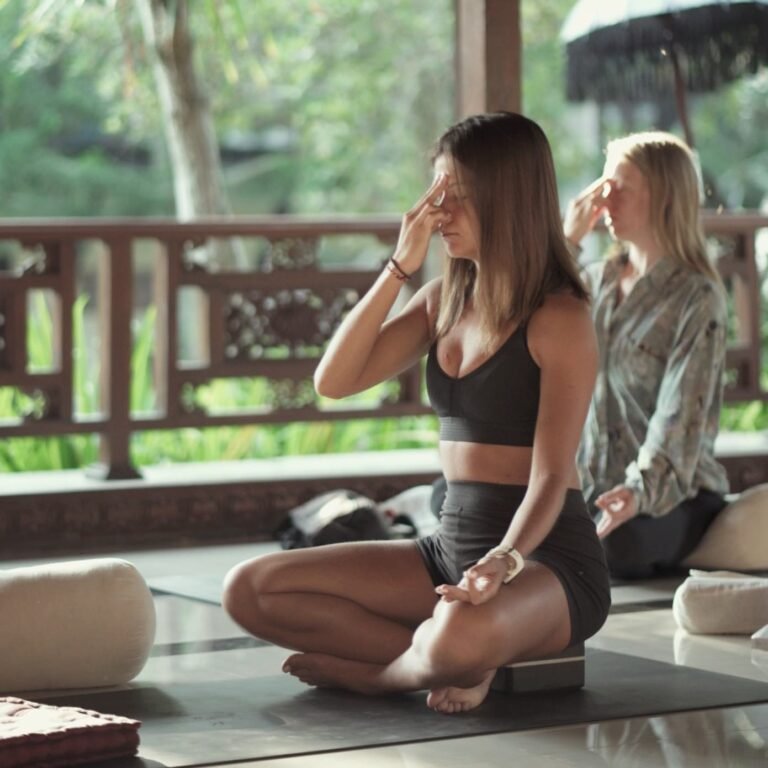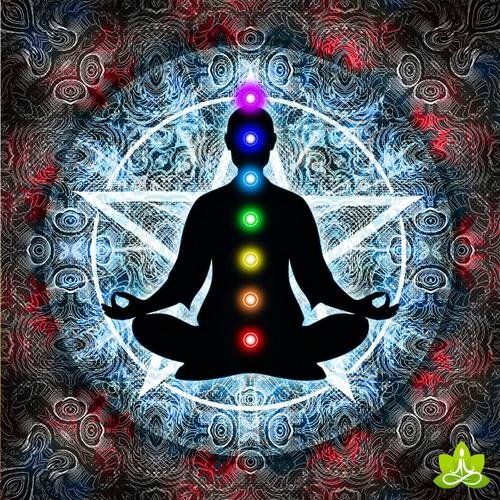Exploring the Warrior Pose: How to Enhance Strength and Stability with Virabhadrasanas I, II, and III
Who in the world has never dreamed of being a warrior? At least for once, this thought has crossed our minds, but as maturity sticks in our heads, we get to know that it’s something that only sounds good when dilusional and has nothing to do with actual reality. But wait, despite not being a complete, actual warrior, you can still have the unwavering spirit of a warrior. Do you know how? With Virbhadrasana, the warrior poses.
Virbhadrasana is a powerful yoga pose that is specifically named after a legendary warrior in Hindu mythology. But let’s not get confused with the name, as this pose includes more than just fierce imagery. This pose can be done in three variations (Warrior I, II, and III), which offers a perfect blend of physical and mental benefits. When you hold a warrior pose, you begin to feel the burn in your legs where your core is engaged for stability, resulting in an energised body. But here is not the stop; its benefits go far beyond that.
Mastering this pose brings in focus, a sense of balance, and inner strength, which are qualities that any warrior would appreciate both inside and out. This is just a brief introduction; let’s go deep into this asana and get to know all three variations in detail. So awaken your inner warrior now. Let’s begin.
Understanding the Warrior Poses: A Detailed Explanation
Now that you have decided to fire up yourself by mastering this pose, let’s delve into the details of how to do it. Here are the instructions and tips to use while practicing this pose for a safer and more effective practice:
Warrior I (Virabhadrasana I): The Foundation of Strength
Warrior I Virbhadarsana is the foundational pose for the more challenging variations to master further; it is also considered the cornerstone of the warrior sequence. Here are some tips on how you can master it:
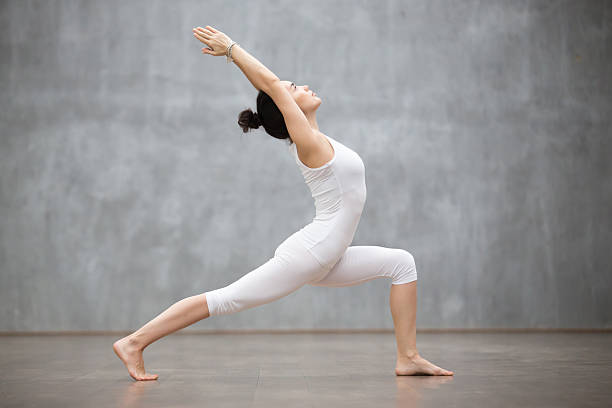
Step into power:
- Begin by standing straight with your core engaged and your spine straightened in a mountain pose.
- Slightly step your feet apart for about 3–4 feet.
- Turn your left foot slightly inward for about 15 degrees while turning your right foot out at an angle of 90 degrees.
Root and Rise:
- Alignment begins with aligning your right heel with the centre of your left foot.
- Inhale deeply while reaching your arms overhead.
- Place your arm in the namaste pose, palms facing each other.
- Keep your back straight and your shoulders down.
Warrior’s Gaze:
- While exhaling, bend your right knee to the point where it’s directly over your ankle.
- Bend your left knee deep and flat, bringing your left heel to the ground firmly while keeping your left leg straight.
- Look forward and maintain your vision straight down to a line.
Alignment Cues:
- Always look after your knees, and do not push tracking beyond your ankles.
- While holding, ensure your body remains erect and grounded and effectively taut, particularly your abdominal muscles.
- Keep your hips square and avoid letting them twist forward.
Variations for Beginners:
- For added support, you can practice with your hands on your hips.
- For better comfort and to avoid injury and pain, avoid bending the knee deeply and do it slightly as per your flexibility level.
- Avoid rushing to achieve perfection and go at a slow pace.
Warrior II (Virabhadrasana II): Embracing Balance
Warrior II is like taking on the challenge of being a warrior at a higher level, where balance is the key element. Here’s how you can master this level:
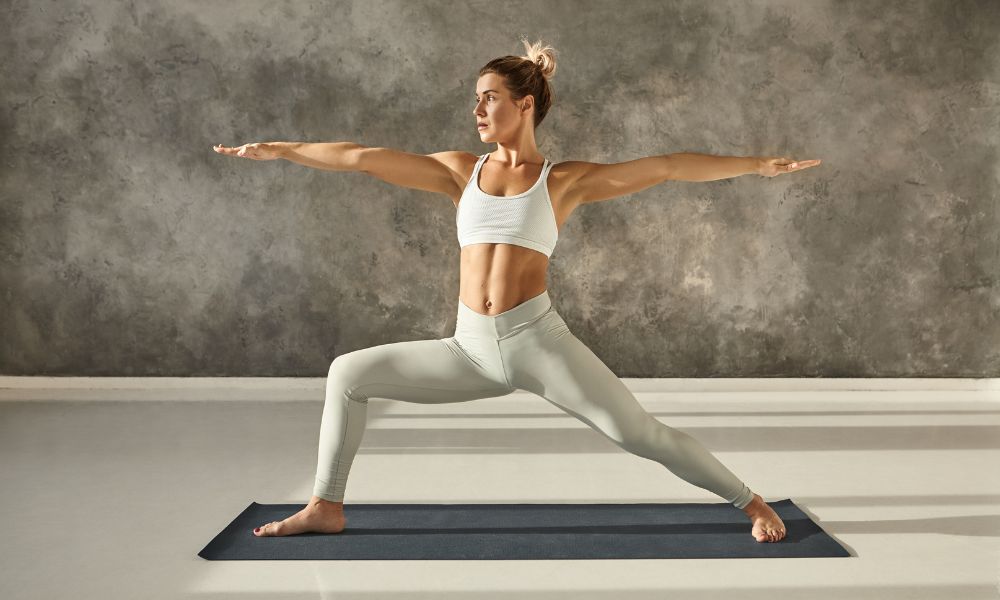
From Strength to Steadiness:
- Begin the practice with the warrior I pose, and keep your body in the position.
- While exhaling, slightly bend your front knee until it forms a right angle.
- Extend your back leg straight as much as you can, slowly and steadily.
- Reach both your arms out while your palms are facing down, keeping your hands parallel to the ground.
Find Your Centre:
- To balance the body, keep your gaze fixed on your front hand.
- Maintain a straight and long spine by engaging your core.
Steady Breath, Steady Warrior:
- Breath evenly and deeply throughout the pose.
- Focus on the breath to keep your mind centred on the position.
Emphasis on Balance:
- In the context of pose stability, the foremost idea should be the equal polarisation of the feet through the floor.
- Do not let your hips shift side to side when coming into that hold, and concentrate on your stomach muscles keeping you upright.
Modifications for Beginners:
- As a precaution, it is advisable to stand close to the wall, especially when you are trying to stabilise yourself, since you will get it right in the end.
- For stretching, you can begin by keeping your arms alongside you in case extending them over the shoulder seems challenging for you.
- Keep your arms at shoulder level with your palms facing down for the beginning, and move them slowly as you progress.
Warrior III (Virabhadrasana III): The Warrior’s Leap of Faith
The third and final variation of the pose out of the three types of Virbhadrasana is Warrior III, which poses an extra challenge to balance and strength. Here’s how to do it:
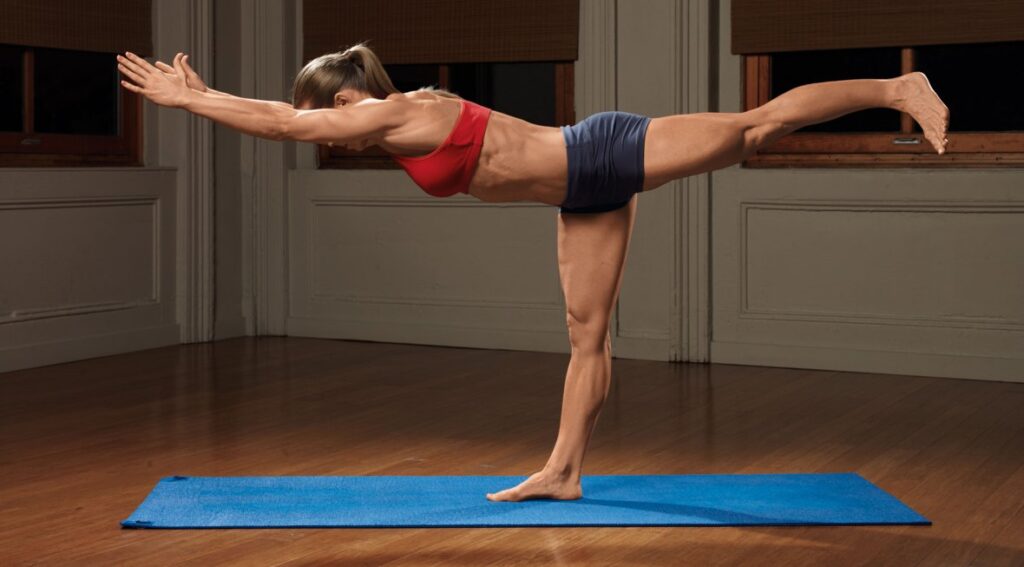
From Warrior II to Warrior’s Flight:
- Begin the pose by putting your body in the warrior II position.
- Inhale a deep breath and lift your back heel off the ground.
- Extend your leg back straight, parallel to the ground.
- Reach your torso forward while keeping your spine long and your core engaged throughout the pose.
Arms Like Wings:
- To position your arms, extend them overhead, palms facing each other.
- Look at the person in front of you and maintain a steady gaze.
Finding Your Balance:
- Breath deep and hold the pose for several breaths.
- Make sure for stability; keep your hips vertical and your stomach muscles tense when swinging.
Importance of Foundations:
- Before attempting the Warrior III pose, it is important to develop a proper understanding of the Warrior I and II poses because the foundation of the Warrior III pose rests on the Warrior I and II poses.
- Stability in this complex posture requires strong core muscles and should be the main focus of someone ‘getting engaged’ with the pose.
Progression Tips:
- Perform other balancing postures before you attempt to make a head stand, as it will help you gain confidence.
- When performing the pose, use the starting point of five to ten seconds, and then elongate the muscles to maintain the position until a set time elapses.
Deepening Your Warrior Practice: Unleashing Your Full Potential
Now that the warrior poses’ essence has been captured in an A/B setup, let’s take a closer look at what might be inside each. This section will empower you with ways to build a better warrior, ways to improve the balance and stability of a warrior, and ways to learn the spirit of a warrior.
Strengthening the Warrior Poses: Building a Powerful Foundation
This can only be built from the ground up and firmly to enable the warrior poses to be held in proper form and to thus tap into the practice’s benefits. Here are targeted exercises to strengthen the key muscle groups involved:
- Legs: For instance, squats, lunges, calf raises—develop lower body endurance necessary to uphold the warrior poses with deep lunges and weight on legs.
- Core: the plank variations, boat pose (Navasana)-it is crucial for the core muscles to keep one’s hips from oscillating in the warrior poses.
- Upper Body: Chaturanga push-ups and rows – these help to build upper body fortification and help in maintaining structure in Warriors I and II while holding your arms up above your head.
Options for Different Fitness Levels:
- Beginner: Begin with basic exercises or lower-resistance movements, or simply begin lifting weights. The use of high-intensity exercises and minimal equipment usage.
- Intermediate: Add weight-bearing exercises, more repetitions, or less exercise time.
- Advanced: Expand into moderate-to-high-level options such as single-leg modified squats, psquats, squats, or any exercises that engage your core.
Unlocking Stability: Finding Your Warrior’s Centre
Stability and steadiness are the two features of Warrior II and III poses. Here are techniques to cultivate steadiness in your practice:
- Drishti (Gaze): By stabilising the eyes on a focal point, the possibility of concentrating single-pointedly in terms of focus and balance increases.
- Footwork: Ensure that your body is touching the ground with both feet in order to create a solid bed for your wide-stance warrior.
- Micro-adjustments: Small changes to your posture can help to provide the right balance when on the move, and this is okay. Choose to make your feelings of primary importance and try to focus on a calm and balanced state of being.
Breathing Exercises for Enhanced Focus:
- Ujjayi (Victorious) Breath: This kind of breathing to a certain beat has the effect of calming the mind and stabilising the nervous system, preparing for the balance that the poses can then offer.
- Dirga Pranayama (Three-Part Breath): Unlike other breathing exercises that serve an enlightening function, this specifically helps to relax the mind and increase sensation, which increases the ability to hold poses.
The Warrior Mindset: Strength Beyond the Physical
What is interesting to mention further is the fact that the warrior poses are not only about physical endeavours. In their case, they symbolise strength from within, bravery, and an indomitable spirit. As you hold these poses, cultivate the following:
- Focus and discipline: Keep your eyes open and make sure you are breathing to remain calm during the tracking.
- Willpower: Ignoring the pain in the chest and continuing this exercise while making sure that one is bending backwards in the right manner helps to develop perseverance.
- Confidence: When a person is capable of handling certain poses, it helps in building up much-needed confidence and producing a feeling of achievement.
How the Warrior Poses Cultivate Inner Strength and Confidence:
In the warrior poses, for instance, one gets to experience a change of weather and create ways and means of defeating the’enemies’ so that she or he can sustain rigor. It translates to practice in real life, having confidence and strength in order to face various adversities with the spirit of a warrior.
Let it be noted that it does take time to master the warrior poses, and one can never be too good at them. The technique is to adopt it, to cheer, and to let the warrior in you come out.
Conclusion
From your own findings, one is able to conclude that the integration of warrior pose into one’s yoga practice holds so much in store. They put’strike’ into your muscles, add to your ability of balancing and steadying, and draw your attention or engage your core. However, the path of the warrior does not end with his anatomy or facial features.
Thus, assuming such stances, one builds up attributes such as mental bravery, determination, and doggedness because a warrior’s spirit is inside of you. So it is rather to take up the challenges, to stir the warrior within, and to experience the change from within as well as from the outside in the mat.
If you desire more information, look for instructional yoga videos or try going to a studio that specialises in warrior yoga to learn more or become part of a community of people who practice this type of exercise.
Read also : Yoga Teacher Training In Bali , 200 Hour Yoga Teacher Training in Bali

